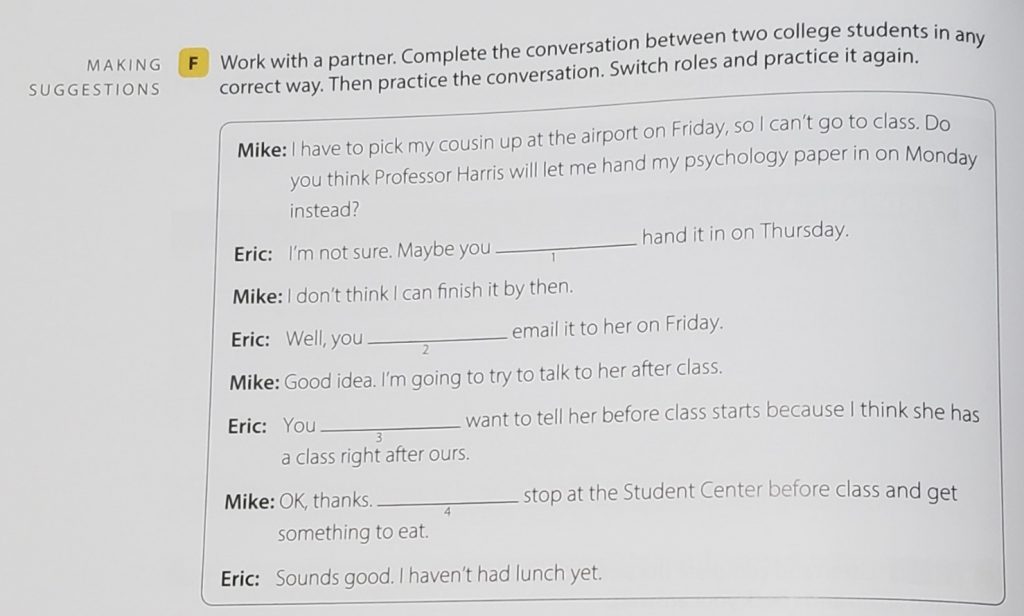The Original Activity
In unit 5 of Pathways 2: Listening, Speaking, and Critical Thinking 2nd Edition, students learn about making suggestions. In exercise E (shown below), students learn how to use the modals could, should, and might to show politeness while making suggestions.

There is no activity involved here, but this exercise is used to complete exercise F (also shown below), which contains an activity. In exercise F, students are given a pre-written conversation between two people and must work in pairs to fill in the blanks with the modals learned in exercise E. They are then required to practice the conversation, taking turns being each person.

This exercise provides an example that may be relevant to students and allows them to explore the use of different modals, but the example is unauthentic, and it does not ask students to analyze the differences in what modal is used.
What are its strengths?
- It offers freedom for students to use language that they deem necessary, not asking for a single correct answer to fill in the blank.
- It allows for group work and speaking practice.
- It builds on a previous exercise.
- It teaches students to consider English pragmatics through politeness, which goes beyond simple vocabulary.
What are its weaknesses?
- It does not provide an authentic piece of conversation.
- Adaptation: A video, such as a real-life interview, could be used instead. Instead of the pre-written passage, students can instead just write down examples they hear of suggestions being made. This will also touch on listening skills.
- It does not explicitly allow students to analyze the difference in meaning depending on what modal is used.
- Adaptation: Have students fill in the blanks with each of the three modals learned and, after practicing the conversation through speaking, discuss which modal sounds least and most polite.
Revised Activity
Objectives
- Use the modals could, should, and might to make suggestions.
- Determine the politeness of a modal used to make suggestions.
Instructions
- Working in pairs, students will watch a video where two people engage in conversation. They will write down examples they hear of someone making a suggestion.
- Students will identify the modal used in each example and substitute in the modals could, should, and might.
- Students will practice saying these examples to each other, taking turns using each modal.
- Students will discuss how the examples differ in politeness depending on the modal used.
Materials
- Pathways 2: Listening, Speaking, and Critical Thinking 2nd Edition unit 5 exercise E
- Video of two people talking (hypothetical; haven’t found actual video)
- Student worksheet
References
Chase, R. T., Johannsen, K. L., MacIntyre, P., Najafi, K., & Fettig, C.. (2018).Pathways 2: Listening, Speaking, and Critical Thinking. Boston: National Geographic Learning.